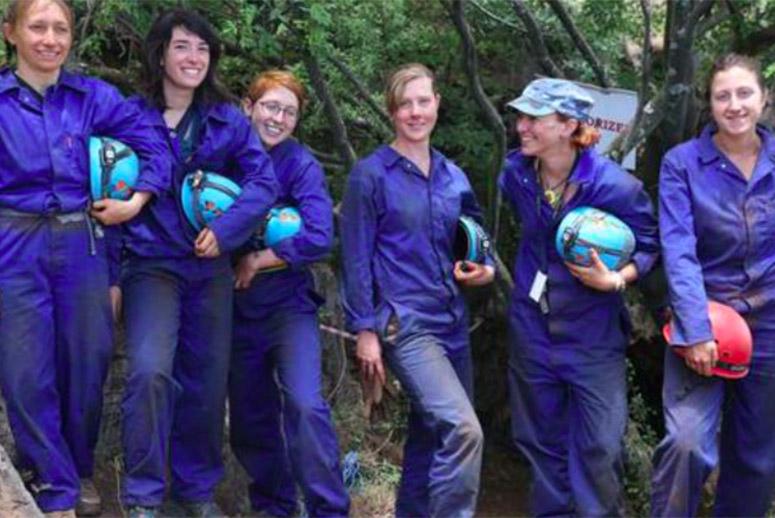We reported last week on the discovery of a new species of humankind. In the Nat Geo piece, we recommended, it talked about the need for smaller people to get into the small openings where the remains were found, but now we’ve learned more about these “small” scientist. There were six women who worked on this major scientific breakthrough. Here’s their story:
From Yahoo News:
News of a recently discovered species some scientists are saying could be a new link in the chain of human evolution made headlines this week. The wealth of fossils from the possibly new species is thanks to a team of female scientists.
The six women, dubbed “underground astronauts,” traversed dangerous conditions in the South African cave Rising Star to uncover 1,550 fossil fragments from at least different 15 skeletons, National Geographic reports.
Paleoanthropologist Lee Berger carefully selected the team based on their qualifications—and body type. The excavators had to squeeze through a particularly narrow 10-inch passage called Superman’s Crawl to reach what researchers believe was a mass grave. After learning of the potential find in 2013, Berger put an ad on Facebook seeking small, skinny diggers for the expedition. Of the 60 or so applicants, Berger went with a crew of six women: Canadian Marina Elliott, Australian Elen Feuerriegel, and Americans K. Lindsay Eaves, Alia Gurtov, Hannah Morris, and Becca Peixotto.
“Looking down into it, I wasn’t sure I’d be OK,” Elliott told National Geographic of the cramped quarters filled with stalactites. “It was like looking into a shark’s mouth. There were fingers and tongues and teeth of rock.”
Like all science-related areas of work and study, paleontology is a historically male-dominated field. Women make up just 24 percent of working scientists and engineers in the U.S. and 23 percent of the Paleontological Society.
“If you’re going to name someone famous in the field, 90 percent of the time it’s a man,” a female paleoanthropology graduate student told Slate. But these six scientists have certainly made names for themselves.
The women worked in two-hour shifts, going barefoot to protect the fragile fragments. The team uncovered jaws, skulls, teeth, and ribs unlike any species discovered before, prompting Berger and his team to give it a new name: Homo naledi.
While Berger believes that Homo naledi could be the root member of our genus, scientists will likely debate the findings’ historical significance and the age of the fossils for decades to come. In the meantime, Elliott plans to keep on digging: “We have literally just scratched the surface.”






